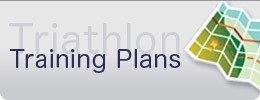Every time you do a triathlon, you will pick up tips and tricks from talking to and watching more experienced triathletes. Here are a few simple tricks to help make your race day go more smoothly.
If you’re a more experienced triathlete reading this, please share your tips and tricks in the comments section below – we’d love to hear them!
Rub TriGlide, BodyGlide or another non-petroleum-based lubricant on your ankles, wrists and neck before putting on your wetsuit.
This will help the wetsuit slide off more easily at the end of the swim as well as help with chafing at the back of the neck. If you are looking to save few seconds in transition, undo the zipper and take off the upper half of your wetsuit while you are still running from the swim exit to your bike. Hint: Use BodyGlide or equivalent anywhere else on your body you are prone to getting chafing like front of chest or under arm pits.
Use anti-fog drops so your goggles don’t fog on race day.
Equally effective is to use the scuba divers’ method, which is to place a drop of baby shampoo into each lens of the goggle and let it dry. Think about what lens tint you want for your goggles ahead of the race. If you swim strictly indoors, you may train with clear goggles. During an open water swim at sunrise, you will find it easier to see the buoys and sight with a dark tint lens.
Practice grabbing bottles from an aid station before the race.
You can do this by having a family member or friend stand on the side of the road holding out water bottles while you ride by to grab them. Even if you carry enough water on race day, you never know when you’ll be extra thirsty or lose a bottle on a bump. You’ll become more comfortable picking up more fluids at aid stations. Of course, you can always pull off to the right and stop completely before taking a bottle at an aid station – just be sure to watch out for other racers and signal your intention to stop.
Walk and learn the path from swim exit to your bike to bike exit.
Entering T1 after the swim can be disorienting and you don’t want to get lost! We encourage athletes to count how many aisles they will have to go done before turning and how many racks they’ll pass before reaching their gear. Once you finish doing this you can walk to where you will come in for T2 and also plan out your route for returning the bike to the rack.
Make sure to charge and reset your GPS / smart device.
This includes checking that features such as auto-lap, auto-pause, and data fields are set the way you prefer for racing. If you have a power meter, calibrate it before you get to transition so that your GPS doesn’t confuse it with other power meters on nearby bikes.
Each athlete has their own way of getting themselves set up for a triathlon. There are also different approaches depending on the race distance. Tell us what your tricks are along with your favorite race distance by leaving a comment below. Good luck!


